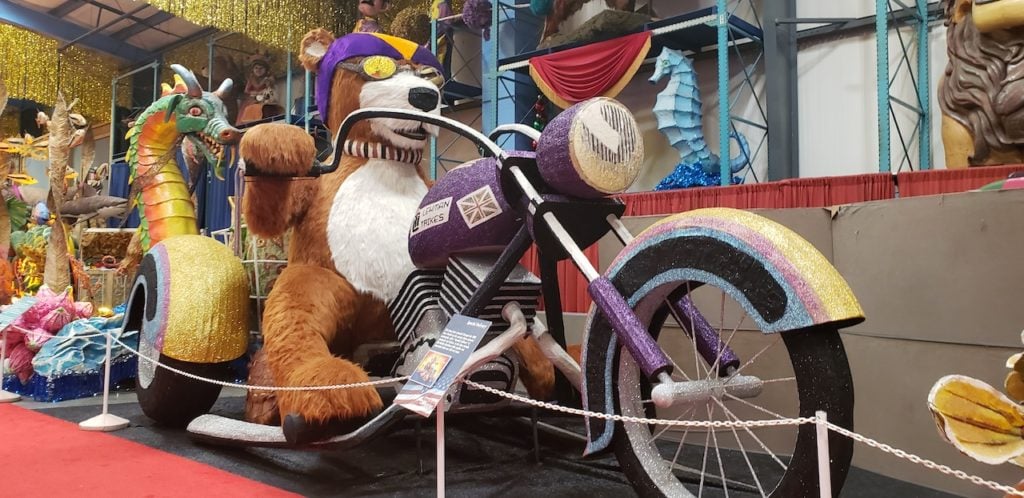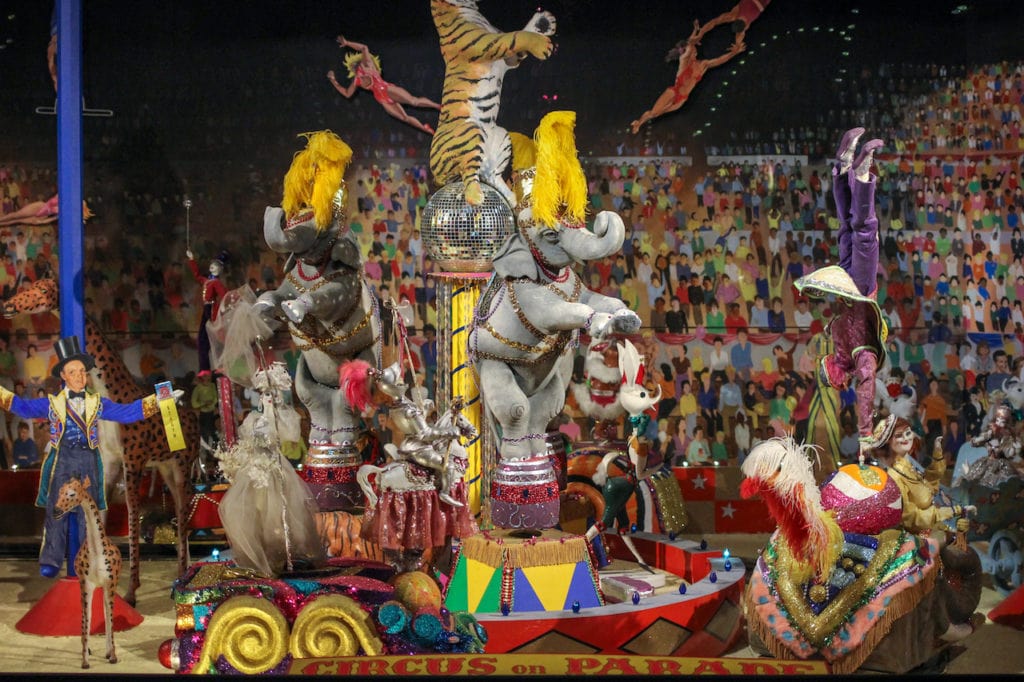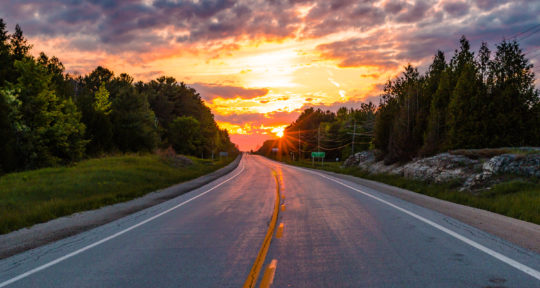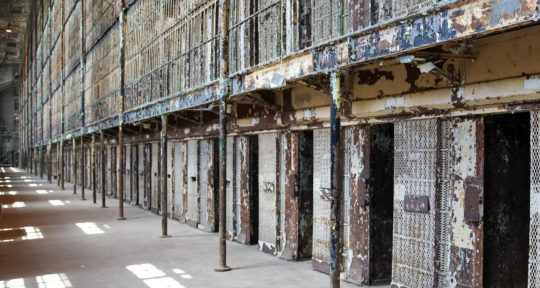Walking into the American Celebration on Parade warehouse is a bit jarring. Bright red carpet lines rows of walkways while mythical creatures, like a sphinx and a dragon, or friendly animals like ducks and elephants tower above you. On the outer edge of each pathway are dozens of parade floats on display, appearing in all shapes and sizes—a giant train, a purple elephant, the Statue of Liberty, and a teddy bear riding a motorcycle, among hundreds of other oddities.
On television, these displays are made tiny through the filter of the screen, but inside American Celebration on Parade’s 40,000-square-foot warehouse, everything feels larger than life.
Dancing ducks on parade. | Photo: Malika Bowling A teddy bear races a motorcycle. | Photo: Malika Bowling Lions and tigers and bears, oh my! | Photo: Alexandra Charitan
“Nobody understands how big these floats are until you stand next to one,” says Kathy Kelly, daughter of the collection’s founder, and its current owner. “It just blows people away.”
Here, in the middle of the Shenandoah Valley of Virginia, sit decades of parade floats—no longer destined for junkyards and oblivion, but instead able to find new life. Each year, nearly 70,000 visitors from all over the world walk through these star-spangled pathways, hoping to hold on to that celebratory spirit year-round.
The man behind the floats
While the Shenandoah area is perhaps most famous for its caverns, there’s more to the valley than underground rock formations. American Celebration on Parade and its sister exhibit, Main Street of Yesteryear, are located right next to the caverns, which for many years were owned and operated by the same man: Earl Hargrove.
It all started with Christmas decor. In the 1940s, Hargrove started his career by helping his father decorate storefronts in Washington, D.C. This decorative talent lead to building floats for the Miss America Pageant and the Cherry Blossom Parade in Washington. Eventually, Hargrove became such a sought-after designer, he was asked to design floats for presidential parades, starting with President Truman’s in 1949.
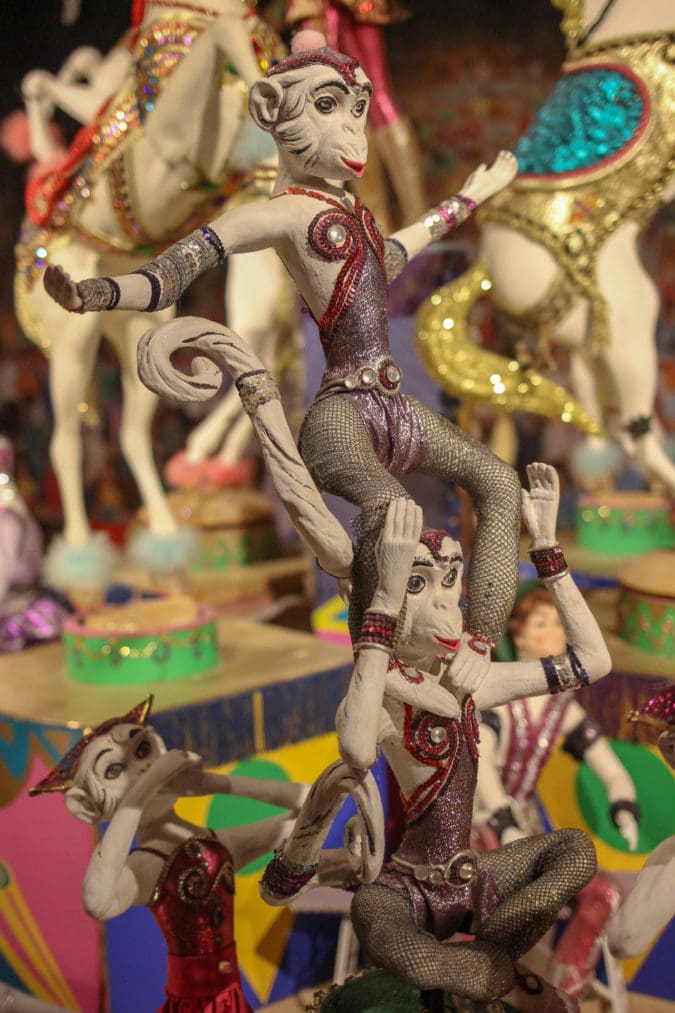
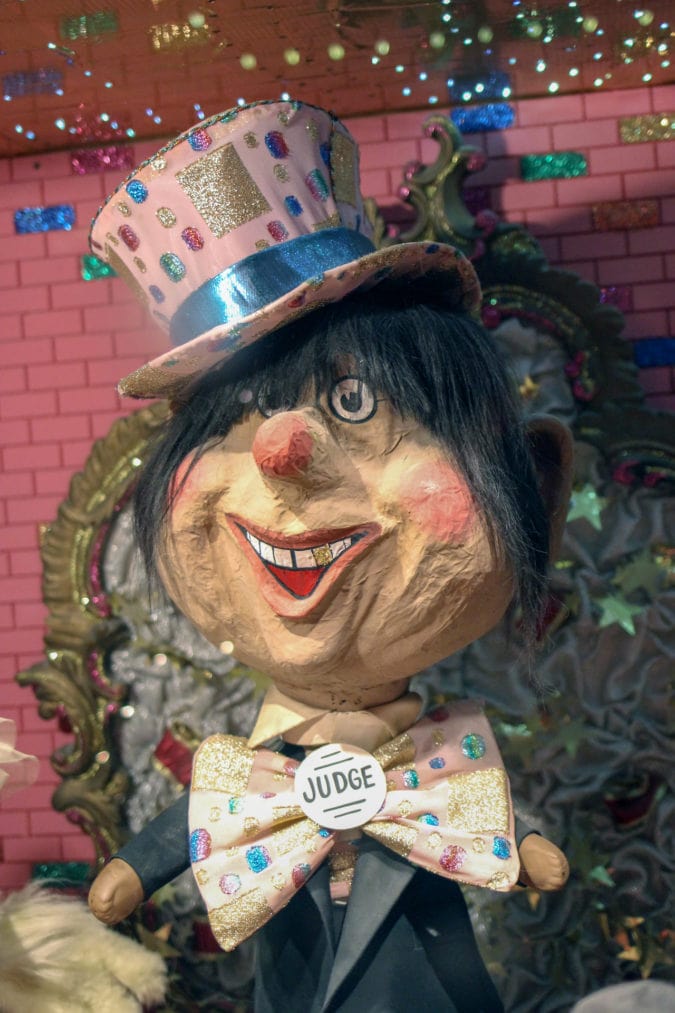
Each float was made almost entirely out of everyday materials like straw, glue, or wood. Hargrove pieced together styrofoam, glued papier mâché, and welded metal parts to produce these ephemeral objects. When Kelly, his daughter, was just eight years old, Hargrove brought her into the family business and taught her how to make sections of the parade floats herself.
“We did the bi-centiennial parade in D.C. in 1976 and built 15 floats in five weeks,” says Kelly.
Hargrove had such great pride in what he built, it was difficult for him to part with his creations, especially after they’d only had a few hours in the spotlight. He decided to build a warehouse to showcase these floats for all to enjoy beyond the parades. American Celebration on Parade opened in 2000.
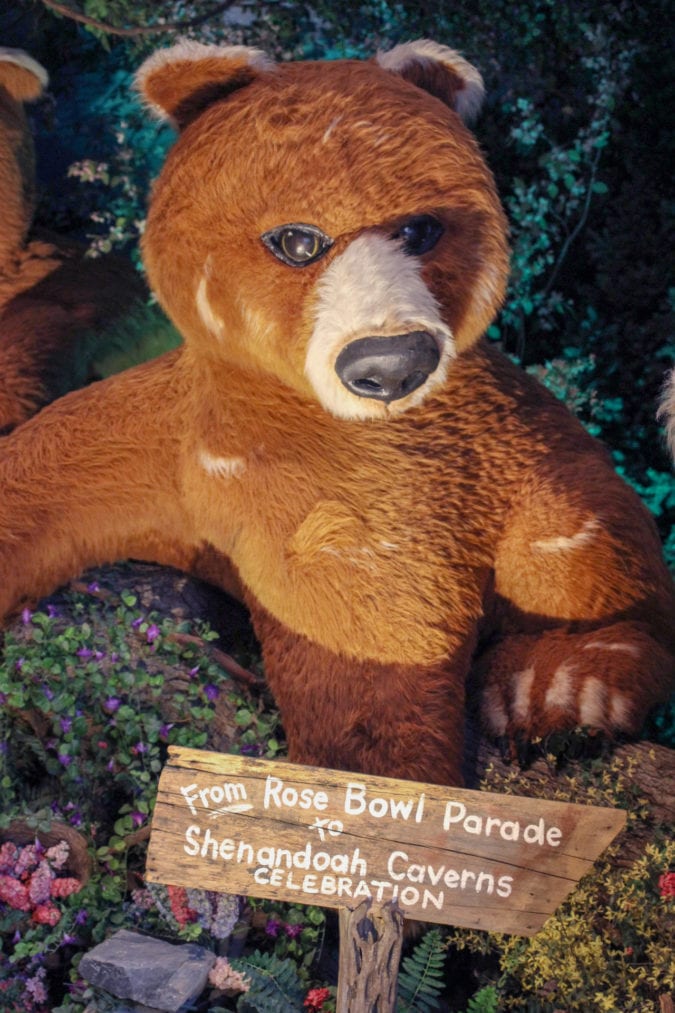
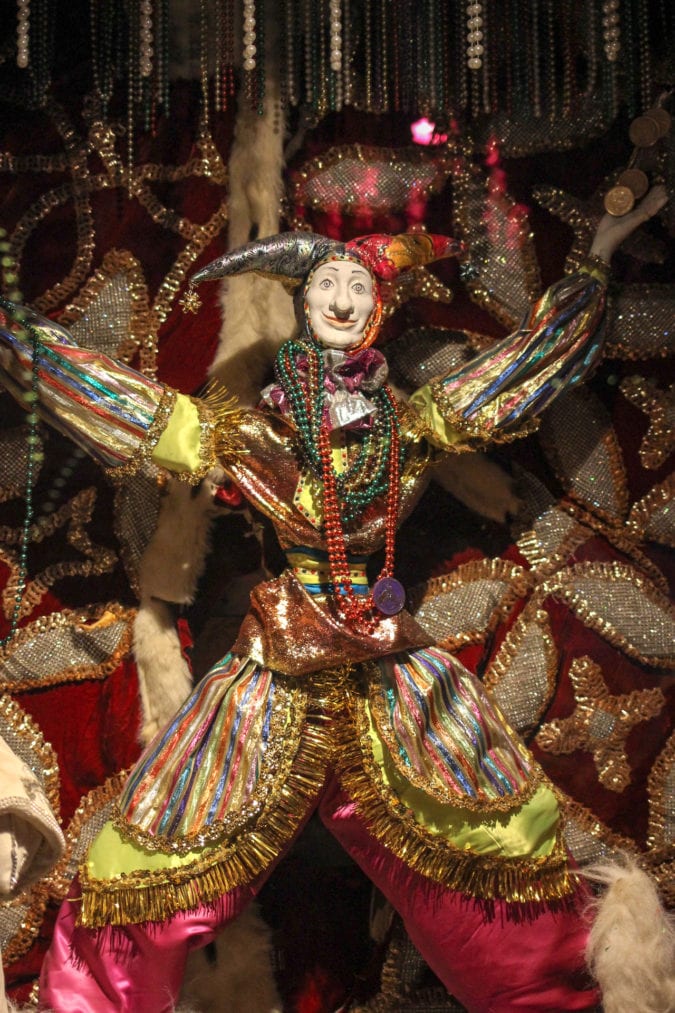
In the museum, floats are often repurposed. The ducks on display first appeared in the 1991 Rose Parade. Flowers adorning artificial tree tops were originally used as decoration during John F. Kennedy’s inaugural ball. Some floats were used over and over again, reincarnated from one icon to another.
When Hargrove passed away in 2015, Kelly purchased American Celebration on Parade from her mother.
Beyond the parade
Occupying the entire floor above the caverns’ gift shop is Main Street of Yesteryear, Hargrove’s exhibit of antique department store window displays from the ‘40s and ‘50s. The displays vary widely in style and theme, but they all animate in some way, triggered by sensors on the floor. One of the displays features a talent show, with an organ-grinding poodle, a raccoon balancing a disco ball on his nose, swinging bunnies, and a judge who looks like he would be right at home in Nightmare Before Christmas. Circus on Parade is the oldest display in the exhibit and yet the scenes are still vibrant and beautiful even after all of these years.
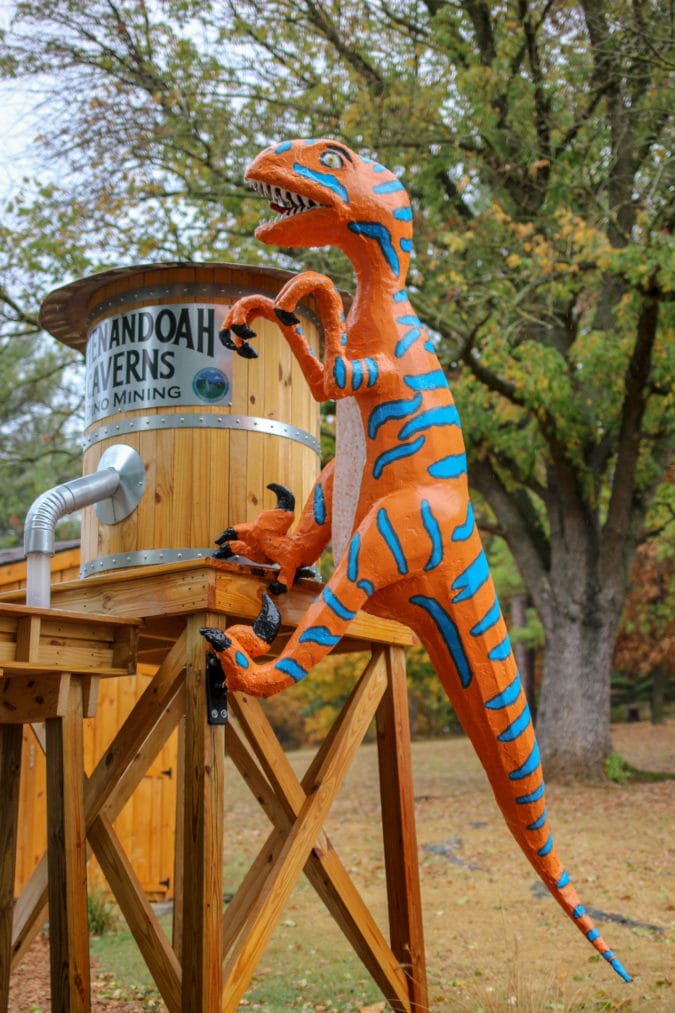
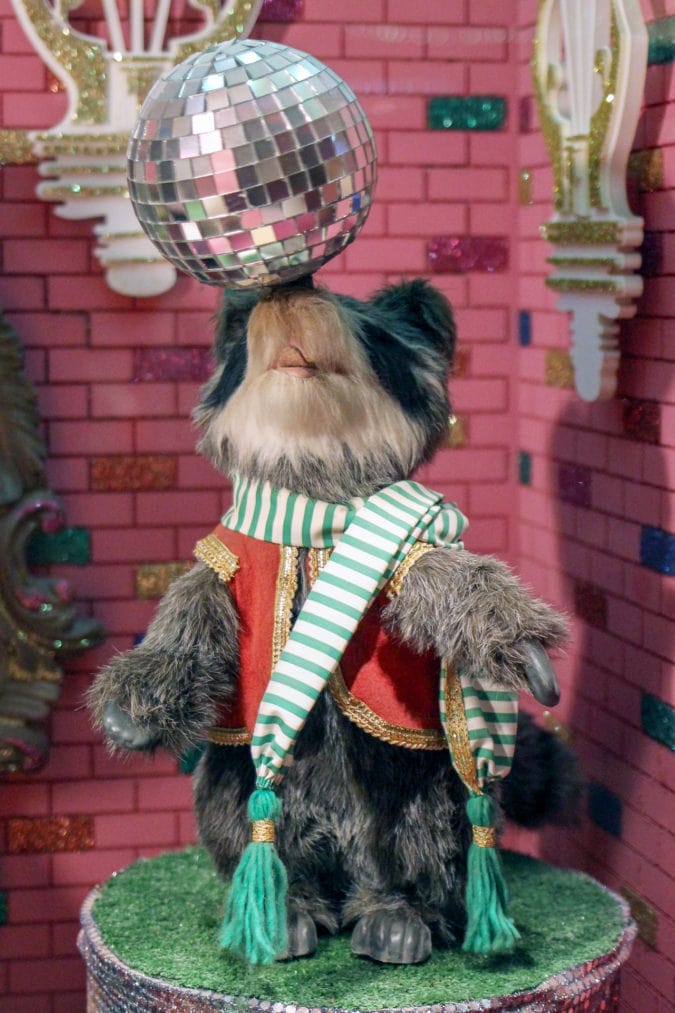
The floats and window displays at American Celebration on Parade and Main Street of Yesteryear have one thing in common: They were initially designed to last only as long as the parade or holiday season. But with perseverance, love, and a lot of TLC by the museum staff—many of whom worked on building floats with Hargrove while he was still alive—they have been given a second life.
Though the organization hadn’t built floats in years, earlier this year Kelly decided it was time to get back in the game. It brought back memories of working alongside her father.
“This year, we took first place for our float in every category for the Apple Blossom Parade,” she says. It was the same parade that brought Hargrove to the Shenandoah Valley in the 1960s. “I just know my father was beaming from heaven. And now we are making one for the Fourth of July parade in Harrisonburg. I know my father would be so proud.”
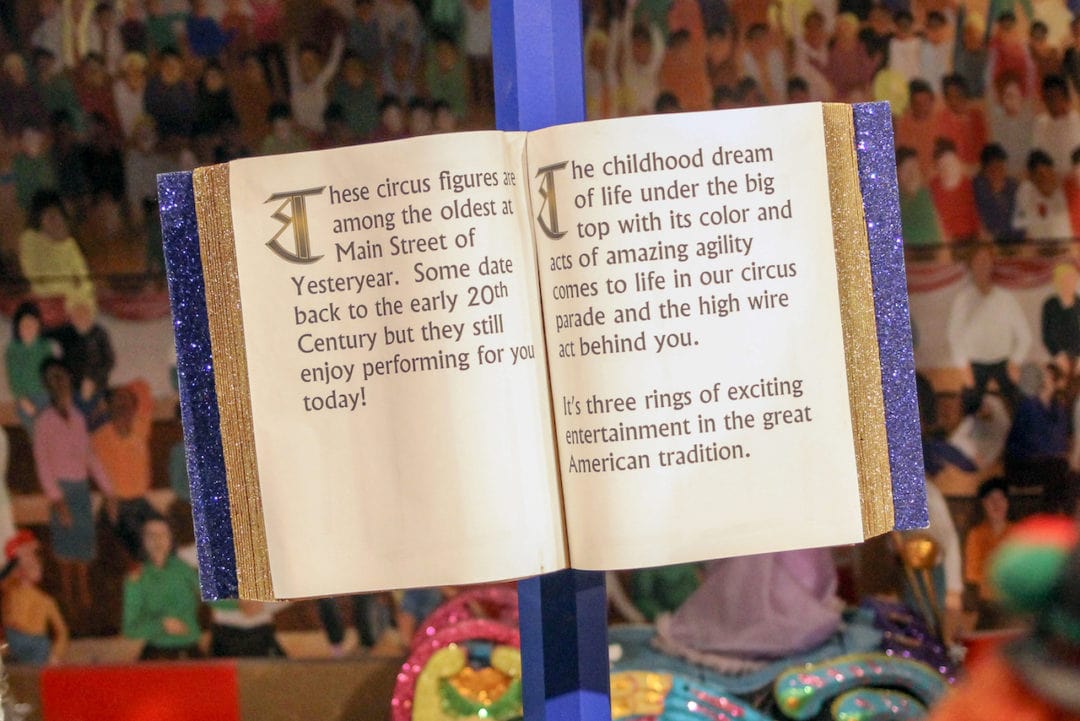
For the Hargrove family, it has always been about celebration. Even when the holidays end and the confetti is swept from the streets, the festivities will live on at American Celebration on Parade.
“In the very last interview before he died, my dad said ‘Every country has their thing and our country has its patriotism,’” says Kelly. “The minute you walk in the building, your heart with go thump, thump, thump.”
If you go
American Celebration on Parade is open daily from 10 a.m. to 6 p.m., but closed on holidays. Make sure to call ahead as they often close in the winter for float restoration (sometimes for several months at a time). Admission is included in your ticket to the Shenandoah Caverns.

